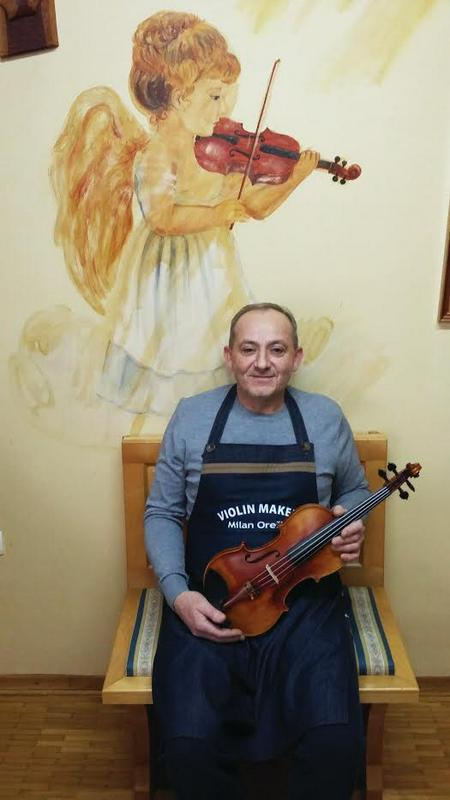
When I make instruments, I have to be completely focused and calm, because at that time there are only two of us, myself and the wood.
Milan Oreški has a special approach to making violins, a philosophical, even esoteric one, which is based on his experience with the wood. "Violin-making requires perfectionism, meticulousness and the dedication of a person in their entire being," he explains. "When I make instruments, I have to be completely focused and calm, because at that time there are only two of us, myself and the wood."
Since he is an auto body repairman by profession, and was also involved in producing leather goods and candles, I was interested to know how he started in this demanding business. Milan told me that he first become interested in violin-making about 20 years ago, after he read a newspaper article about the renowned Slovenian violin maker Jože Kantušer, who at that time worked in Mittenwald in Germany. "When reading the article," he said, "I came to the conclusion that the violin is really an outstanding and special instrument."
Wood can last more than 500 years
Milan has been enthusiastic about wood since his youth, and for as long as he can remember this natural material has inspired him. "I have been dealing with wood from an early age. While making instruments I discovered a number of natural processes that have great importance for both the wood as well as its tone." With such knowledge and skills, he thus works to improve the durability and tonal quality of the wood he uses.
Milan is aided in this work by his collaborations with the Department of Wood Science and Technology at the Biotechnical Faculty of the University of Ljubljana. "The results of my research are an indicator of a how certain instruments gain their remarkable tone. The processes examined are lengthy – they do not last a year or two, but several years or even decades. Each process is carried out in a natural way because I am not interested in chemistry. I am convinced that wood prepared in such a way will last well over 500 years." Oreški thus believes that the preparation of wood, and in particular the craftsman's knowledge of its properties and ways in which it can be refined, are vital.
Each of his instruments functions as a whole unit, and Milan feels that it is very important for the craftsman to respect the nature of the material in everything he makes. "For me, the wood represents an element with a soul that needs special attention, engagement, time, and so on, and gives a great feeling of warmth. I am somehow able to feel the wood", he explained. Oreški thus developed his very own way of making violins, applying some procedures which date back several centuries.
Each piece of wood used in the instrument-making process must be of appropriate quality. To achieve this, Milan Oreški carefully inspects every piece, especially its growth rings. "They must be dense, straight and not pivoted to the left or right. I also knock on the wood because I am interested in its tonal responsiveness. The first grip of the wood gives me a sense of its mass. Wood must be neither too light nor too heavy."
Milan’s instruments are bought by music enthusiasts both young and old. Some of them have already established themselves as professional musicians, while others are only just making their way to the musical stage. They come to him with a desire for something better, different, and special. They come from near and far, including the United States and further afield, although the main markets are in Germany and Austria. Milan Oreški learned how to make violins on his own, and so developed a set of original violin-making procedures that represent a significant and brave step in the manufacturing of musical instruments. He is not interested in mass producing his violins, as it is the sound of each instrument that he considers to be his primary goal, and such an exceptional sound can only be obtained by adopting a singular and respectful approach to the wood.
When I make instruments, I have to be completely focused and calm, because at that time there are only two of us, myself and the wood.

































































